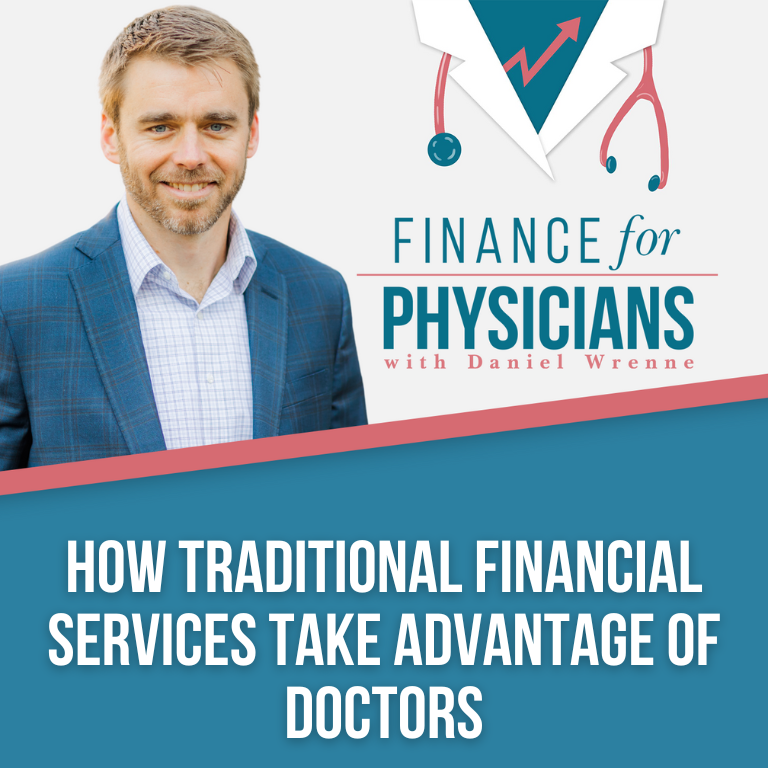Many people in financial services are not looking out for your best interests. I wanted to share a real story from a client we work with to help show you what’s happening. This type of stuff is not the exception – unfortunately, it’s the norm.
The Situation
Our client was just starting out in practice at a not-for-profit hospital. Based on our recommendation, she was working with her hospital’s retirement plan advisor to setup maximum contributions to the 457b and 403b plans.
We were awaiting further details as to what specific funds were available in these plans so that we could assist with fund selection, when I receive a call with an update – she had successfully enrolled in both plans. Perfect!
But, not so fast… what about the funds? She goes on to explain that the plan advisor suggested several specific funds and she took his suggestion – he is the plan’s advisor, after all. This seemed fine, but I still asked that she provide us with the specific funds chosen along with details of the other available funds just to make sure all was good.
Share Classes
Once we were able to review the details, it turned out this specific retirement plan allowed for all types of fund share classes. Share classes are essentially just different expense structures for the same underlying investment vehicle. For example, Fund XYZ might have A, C, R, I, and Y share classes – and sometimes more (confusing right?).
For example, the Oppenheimer International Diversified Fund offers all of the share classes mentioned above and they break down as follows:
(I used the 5 letter “ticker” because that’s an easy way to verify the specific share class for each – plus it’s easy to google each and find details):
- OIDAX – A Share: 5.75% one-time expense on new deposits with balances under $25K and 1.29% annual expenses for any size balance
- OIDBX – C Share: 2.04% annual expenses for any size balance
- OIDNX – R Share: 1.54% annual expenses for any size balance
- OIDYX – Y Share: 1.04% annual expenses for any size balance
- OIDIX – I Share: 0.85% annual expenses for any size balance
It turned out this advisor had recommended A and C Share class funds, which happen to pay the most commissions over time. This is certainly not in the client’s best interest – but unfortunately, for the majority of advisors, this is a totally acceptable practice.
So, What Does That Mean?
Let’s compare the C share vs. I Share to make the math easier. The C share expense is 2.04% and the I share is 0.85%. Let’s assume each underlying fund returns 8% long term before any expenses. The C Share’s net (after expenses) annual return is 5.96% and the I Share’s net annual return is 7.15%. So the I Share outperforms the C by 1.19% simply because the expenses are lower.
1.19% may not seem like a lot, but that’s far from the truth. This becomes a major hit when you consider time. Let’s consider my client who will contribute $36,000/yr to the two accounts combined. If she contributed for 30 years at the same rate and returns were 7.15% (I share), the balance would grow to just over $3.49 million. If she did the same but returns instead were 5.96% (C share), her balance at year 30 would be just under $2.83 million.
Now we’re talking serious money! Basically, that 1.19% expense variance equates to $660,000 over the 30 year period. That’s pure expenses too… something that can easily be avoided with a little due diligence.
Basically, our client was directed to a much more expensive alternative that had a direct negative impact on his return as a result of the much higher fees (and higher commissions). And this recommendation was provided by the hospital’s own retirement plan advisor (who was in line to receive those commissions).
The Bigger Picture
This was all very interesting to me. I was curious and wanted to dig deeper and figure out the financial impact of such a crappy retirement plan on the entire hospital.
This is a hospital that employs more than 100 physicians – an employer of that size should have at least $30 million in the retirement plan. One percent of the excess expenses would amount to $300,000/yr. And the majority of these fees are being paid to the advisor managing the plan – naturally, he was good with all this. He is making a killing.
The hospital may not care… or it may just not be aware because they don’t have to physically write any checks – the fees are all discretely paid out of the participant’s balances. And the participants don’t know how to figure all this out – so, ultimately, they are the biggest loser here.
The Quick Fix
Go find a fee-only advisor – today – and have them analyze your retirement plan. This type of retirement plan audit should only cost you $500 at the most. And with fee-only, you don’t have to worry about them being conflicted with all the commissions that most advisors have to deal with. The $500 fee today is well worth a potential $660,000 more in retirement.
